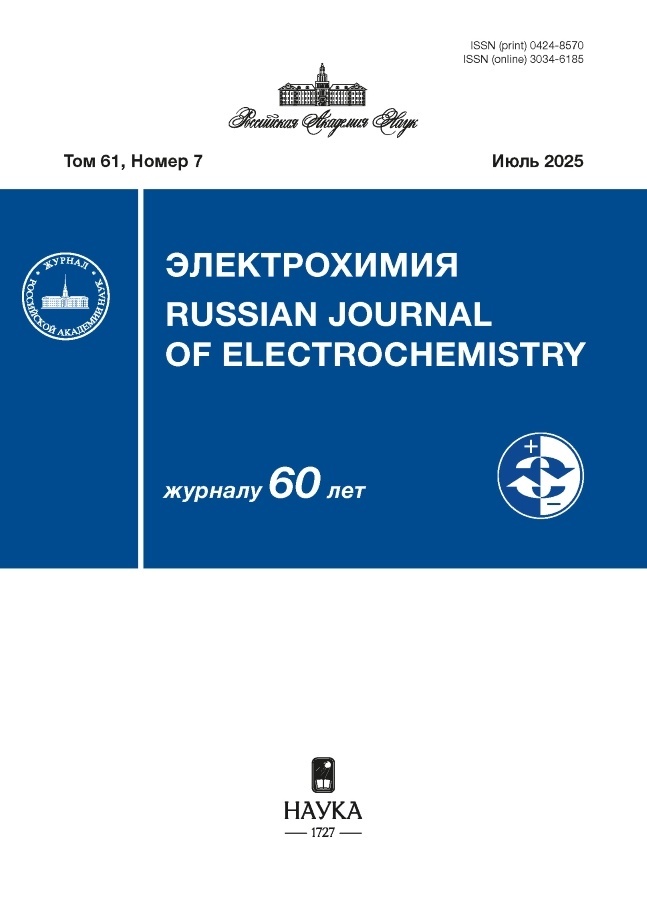Depolarization at electrodeposition of the negative component of the eutectic alloy
- Authors: Gamburg Y.D.1
-
Affiliations:
- Frumkin Institute of Physical Chemistry and Electrochemistry of the Russian Academy ofSciences
- Issue: Vol 60, No 2 (2024)
- Pages: 154-158
- Section: Articles
- URL: https://modernonco.orscience.ru/0424-8570/article/view/671637
- DOI: https://doi.org/10.31857/S0424857024020054
- EDN: https://elibrary.ru/RFJVKA
- ID: 671637
Cite item
Abstract
At electrochemical deposition of alloys various phenomena are observed that lead to changes in the kinetics and thermodynamics of these processes. So, as a result of changing the nature of the electrode surface, the exchange current densities of each of the components and the transfer coefficients change. Further, during the formation of solid solutions, the equilibrium potentials of the components change due to the non-zero enthalpy of mixing and entropy of mixing. At deposition of eutectic-type alloys (that is, a mixture of grains of individual components), each of the metals is not deposited on the entire surface of the electrode, but only on its own surface. In the latter case, there is a change in the diffusion pattern of the components compared to the deposition of individual metals: it remains unchanged in the outer part of the diffusion layer but near the surface there is a condensation of the diffusion fields of the components, similar to how it is observed during diffusion to the matrix of microelectrodes or to individual nuclei of a new phase. This also leads to a change in the diffusion part of the overpotential at deposition of components. The diffusion of ions of a discharging negative component of an alloy representing a mechanical mixture of metal grains A and B to the grain surface of this component in the model of a partially blocked electrode is considered. It is shown that at a constant potential, the local current density of the component is increased as a result of diffusion acceleration. The magnitude of the relative increase in current and the corresponding magnitude of apparent depolarization is found as compared between the deposition of an individual metal and the codeposition of the same component into an alloy.
Full Text
About the authors
Yu. D. Gamburg
Frumkin Institute of Physical Chemistry and Electrochemistry of the Russian Academy ofSciences
Author for correspondence.
Email: gamb@list.ru
Russian Federation, Moscow
References
- Гамбург, Ю. Д. Электрохимическая кристаллизация металлов и сплавов. М.: Янус-К, 1997. С. 293. [Gamburg, Yu. D., Electrochemical crystallization of metals and alloys (in Russian), Moscow: Yanus-K, 1994, p. 293.]
- Горбунова, К. М., Данков, П. Д. Труды 3–го Совещания по электрохимии, М.: АН СССР, 1953. С. 222. [Gorbunova, K. M. and Dankov, P. D., in: Transactions of the 3th conference on electrochemistry (in Russian), Moscow, Acad. Sci., 1953, p. 222.]
- Rama Char, Metalloberfläche, 1962, Bd 16, S. 70.
Supplementary files








